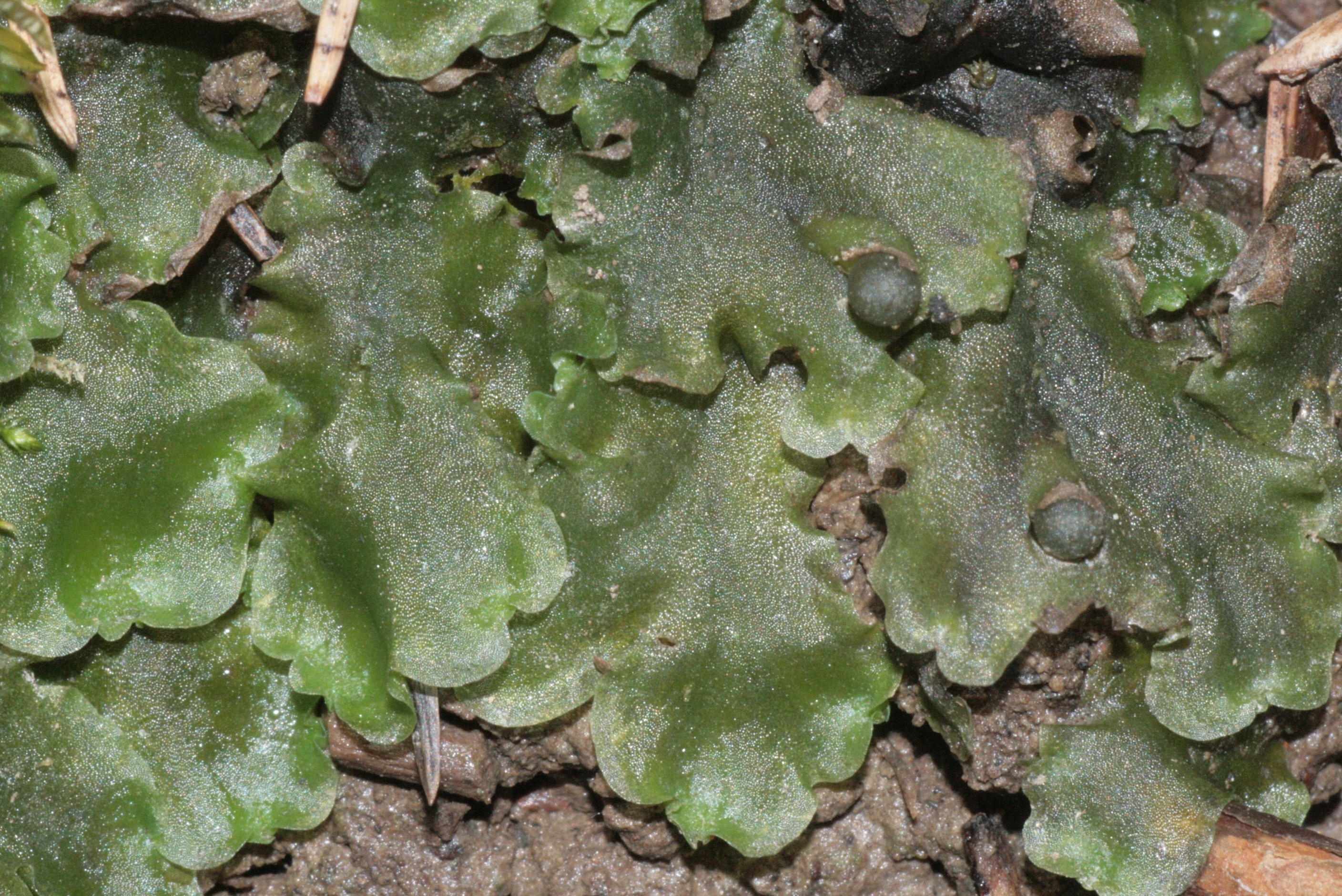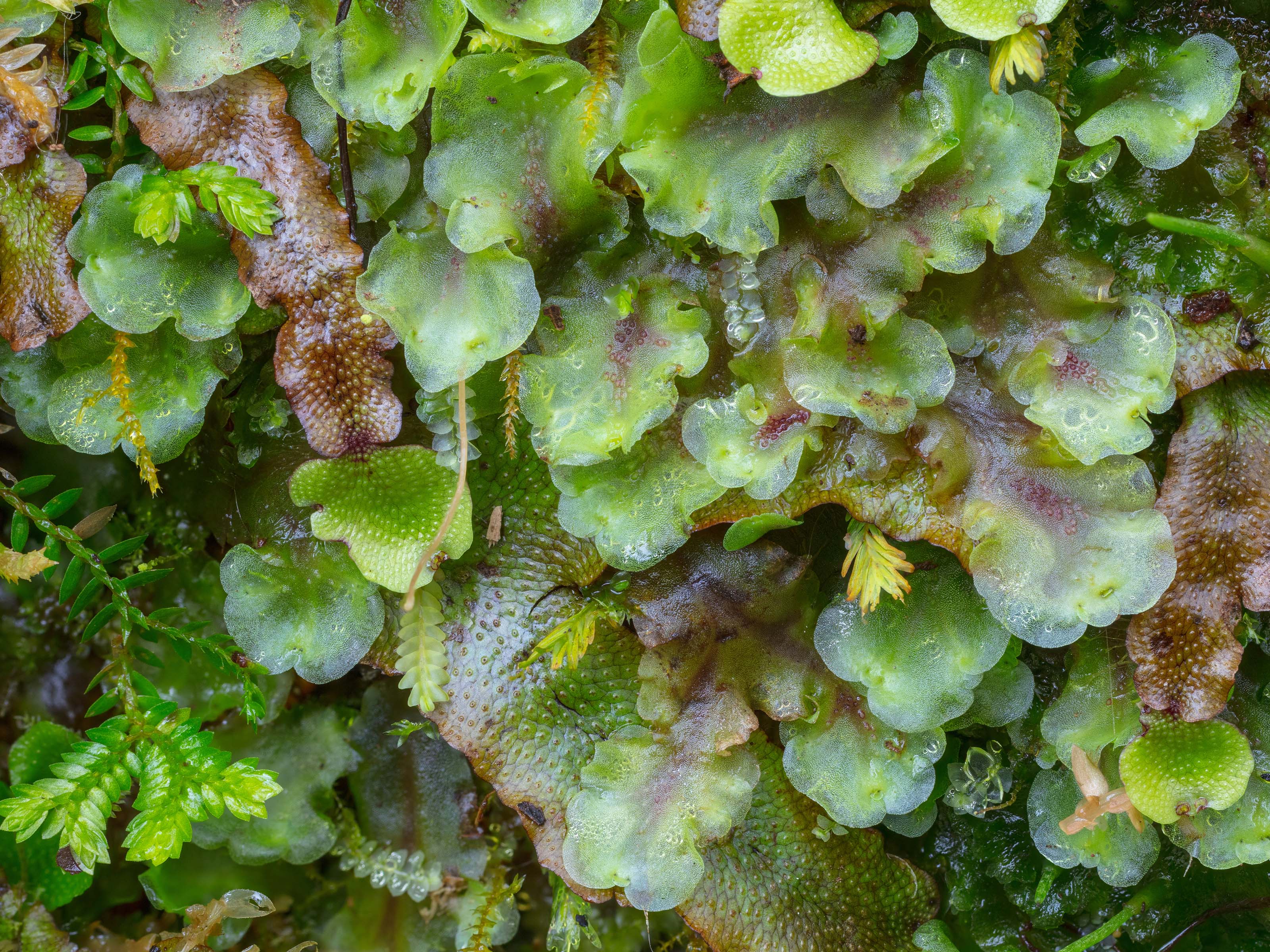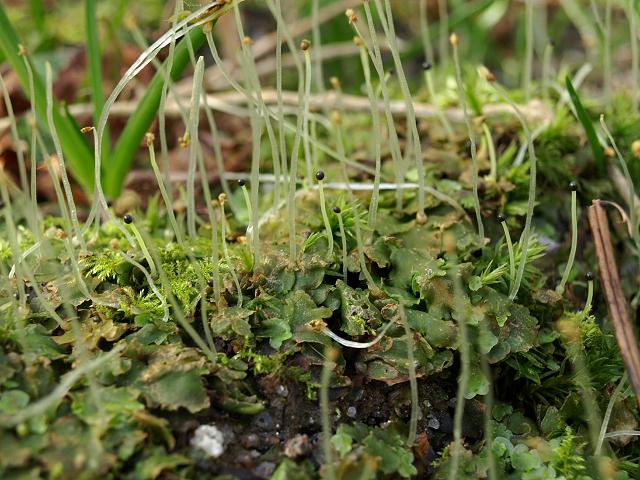Pellia epiphylla
Mean Beckenmoosstrasse ( Pellia epiphylla )
The Common Beckenmoosstrasse ( Pellia epiphylla ) is a thal -free liverwort.
Features
The inferior pelvic moss grows in shallow, often sweeping lawns. The creeping thalli are dark green to light green, and red, ribbon-shaped, irregularly dichotomously divided at sparse locations, cut out heart-shaped at the tips, to 5 inches long and about 0.8 to 1.5 inches wide, dünnfleischig and at the edges slightly transparent. With the rhizoids on their underside they adhere to the substrate. The broad, indistinct limited Thallusrippe is about 10 to 15 cells thick and slightly bulging at the bottom. The ones begin each have 25 to 35 oil body and have particularly in the Thallusmitte annular or helical thickening ridges on. Thallusrand on the cells are stretched 2 to 4 times as long as wide. The top and bottom of the Thallusspitzen are staffed with two-celled slime hair.
The species is monoecious. Antheridia are sunk on the Thallusoberseite along the rib. The sporophyte grows from a small Thallusschuppe, the Perichaetium, which is open to the Thallusspitze out. The Kalyptra significantly overpowers the Perichaetium. The spherical spore capsule is supported by the often over 5 inches long seta. Spores mature in spring, they are egg-shaped and about 70 to 150 microns long. The moss fertilized quite frequently.
Subspecies
The moss occurs in two subspecies that are morphologically difficult to distinguish:
- Subsp. epiphylla, with chromosome number n = 9
- Subsp. borealis ( Lorb. ) Fair, with chromosome number n = 18
Location claims and deposits
The inferior pelvic moss growing at more or less shaded, permanently moist to wet, low lime or lime-free, fairly acidic to subneutralen locations, particularly in sandy- loamy to clayey soils, but also on wet rocks and walls, and peat. The growth sites are preferably in woods, here it inhabited forest floor, Wegböschungen, lanes and ditches. Furthermore, there is growing waters and waterfalls and moors, local swelling and swamps. As a pioneer joyful nature it can colonize young Erdanrisse quickly and overgrown smaller, weaker competitive species.
The species is widespread in the northern hemisphere. In Central Europe it is quite common especially in areas with low lime ground and it comes up in the subalpine zone of the Alps before.










